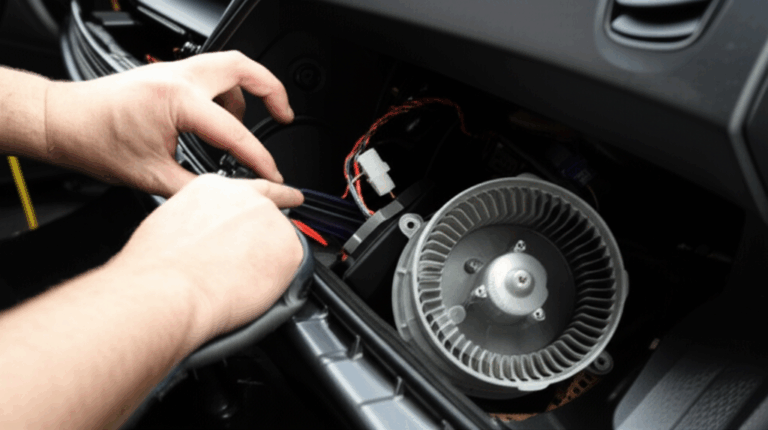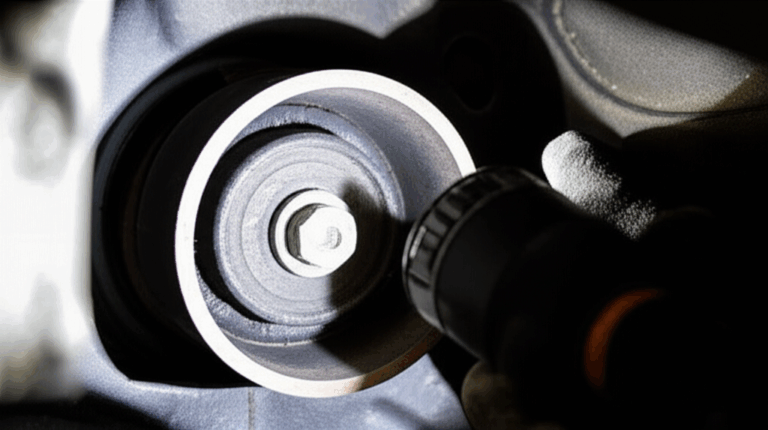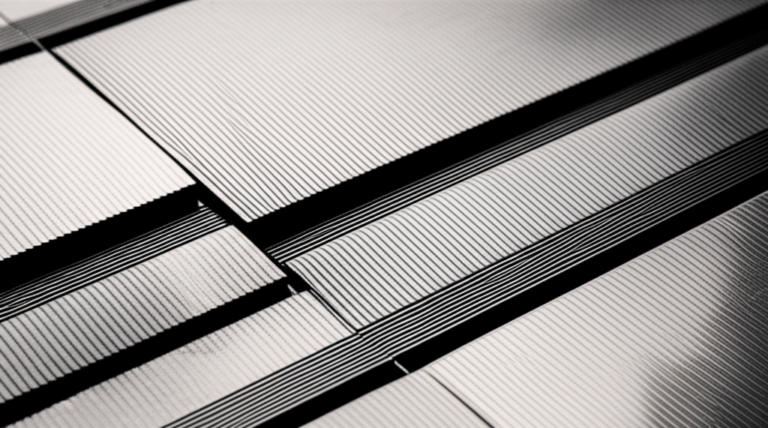
What is a Stator Coil? Understanding Its Core Role in Electric Motors & Generators
- Table of Contents
- What is a Stator Coil? Understanding Its Core Role in Electric Motors & Generators
- Why should you care about a stator coil?
- What is a stator and how does it differ from a rotor?
- What is a stator coil in simple words?
- How do stator coils work inside an electric motor?
- How do stator coils work in a generator or alternator?
- Which winding types and phase options matter most?
- What is inside the stator core and why do laminations matter?
- Where do you see stator coils in real life?
- What can go wrong with stator coils and how do you test them?
- How do you maintain, repair, or rewind a stator?
- How do smart design choices boost efficiency and power?
- Key data, case notes, and what the numbers mean
- FAQ: quick answers to common stator coil questions
- What to remember: quick summary
A stator coil is the steady heart of many electric machines. It sits still and helps make a strong magnetic field. That field turns electricity into motion in a motor. It also turns motion into electricity in a generator. If you get this one part, you can understand how we power homes, cars, and cities.
You should read this because a clear idea of stator coils makes motors and generators feel simple. I will show you how they work in plain words. I will also show you how to spot problems and how to keep them running well.
Why should you care about a stator coil?
Problem: Electric machines can feel like magic. You flip a switch and fans spin. You drive an electric vehicle (EV) and the car moves smooth and fast. Yet many people can’t explain what makes it work.
Agitate: When you don’t know, you guess. You may miss simple fixes. You may buy parts you don’t need. You may face overheating, noise, or lost efficiency.
Solution: Learn the stator coil story. I’ll give you clear steps. I’ll use short words. You’ll see how electromagnetic induction, Faraday’s Law of Induction, and magnetic flux turn a coil into useful power. By the end, you can explain it to a friend. Maybe even to a fifth grader.
What is a stator and how does it differ from a rotor?
The stator is the part that stays still. It forms the strong frame inside a motor or generator. It holds the windings safe in slots. It guides the magnetic field through a core of stator steel.
The rotor is the part that spins. It sits inside the stator. In a motor, it turns and makes torque. In a generator, it turns and creates a changing field. That change makes voltage in the stator coil. Think of the stator as the stage and the rotor as the dancer. The stage stays put and the dancer moves.
People ask about armature vs stator. In many AC machines the armature sits in the stator. In some DC machines the armature sits on the rotor. Don’t get stuck on the names. Focus on who stays still and who spins.
If you want to see how the rotor steel stack affects performance, look at this short guide on rotor core lamination. The match between rotor and stator makes or breaks motor efficiency.
What is a stator coil in simple words?
A stator coil is an insulated conductor, often copper wire, wound into neat shapes and set into the stator slots. The coil may use varnish insulation, epoxy insulation, or other insulation material to stop short circuits. The coils follow a winding configuration that fits the job.
In a motor, current flows in the coil and makes a magnetic field. In a generator, the coil sees a changing field and voltage is induced in the coil. That’s Faraday’s law in action. The coil carries current. Current plus magnetic field gives Lorentz force on the rotor which makes it spin.
The stator coil function can be simple to say. It makes or senses magnetic fields. Yet the details matter. Coil turns, conductor size, and slot fill factor change how much electromotive force (EMF) you get. Good design of stator coils leads to smooth starts and high efficiency.
How do stator coils work inside an electric motor?
Problem: You flip the switch and the motor starts. It looks easy yet the physics can confuse people.
Agitate: If you mistake how it works, you may pick the wrong AC motor components or DC motor components. You may blame the bearings for a vibration that comes from the coils. You may fight noise from stator when the cause is the winding pattern.
Solution: Picture this. When current flows in stator coils, it makes a field. In an induction motor stator the field rotates. We call this a rotating magnetic field. The rotor chases that field. That chase makes torque generation. In a synchronous motor stator, the rotor locks to the field and spins in step.
In permanent magnet motor stator designs, strong magnets sit on the rotor. The stator coils get power from an inverter and a motor control unit (MCU). The MCU shapes the current to the three-phase stator coils. You get high power factor, high efficiency, and fast response. Back EMF rises with speed. The MCU must manage that or the system can’t control torque.
How do stator coils work in a generator or alternator?
Now flip the script. In a generator or alternator, something spins the rotor. It could be a turbine or an engine. The rotor field sweeps past the stator coils. Magnetic flux paths in the stator lamination guide that field. The change in flux causes voltage induced in stator coils. That’s energy conversion in simple form.
A hydroelectric generator uses water power. A wind turbine generator uses wind. A coal, gas, or nuclear plant uses heat to spin the prime mover. In a car, the automotive alternator charges the battery. The alternator’s rectifier turns AC into DC. The rectifier and inverter sit with the MCU in many systems today.
This is power generation principles on display. It all comes back to Faraday’s Law, Lenz’s law, and careful electromagnetism. You line up the magnetic flux with the coil. You pick the right winding configuration. You manage losses so the machine runs cool and strong.
Which winding types and phase options matter most?
You can build a single-phase stator for small loads. Think fans or small pumps. It uses a simple winding. It can need a start method. It can buzz and hum more.
You can build a three-phase stator for most plants and EVs. You get smoother torque. You get better power factor correction. You get higher motor efficiency. That is why three phase rules industry.
Windings come in concentrated winding or distributed winding layouts. A concentrated winding uses fewer slots and tight groups. A distributed winding spreads the coil. It smooths the field and cuts harmonics. It can raise efficiency and lower noise. A squirrel cage motor stator often pairs with distributed windings. A wound rotor stator setup uses coils on both sides for special control.
What is inside the stator core and why do laminations matter?
The core of stator uses thin steel sheets called laminations. These laminations cut eddy current losses and hysteresis losses. Those two sit under core losses in stator. The steel often is electrical steel or silicon steel. Quality steel reduces loss. That boosts IE3 or IE4 class performance.
If you want to see how the stack comes together, check this guide to stator core lamination. The right electrical steel laminations lower heat and raise life. For a broader look at motor stacks, this page on motor core laminations shows how the stator and rotor stacks pair up in real builds.
Inside the slots, you find copper winding and insulation. The system may use mica tapes, epoxy, and VPI (Vacuum Pressure Impregnation). VPI drives resin into gaps. It stops partial discharge at high voltage. The resin bonds the coil to the core. That reduces mechanical stress on stator and vibration in motors.
Where do you see stator coils in real life?
You meet stator coils in many places:
- Industrial motor components run pumps, fans, and conveyors.
- Household appliances like washers, dryers, and refrigerators use small motors.
- HVAC systems push air and chill water.
- Electric vehicle motor systems move cars with quick torque.
- Wind turbine generator sets make clean power.
- Hydroelectric generator units turn falling water into watts.
- Standby generators support hospitals and data centers.
- Automotive alternators charge batteries on the road.
You also see coils in transformers. They do not rotate. Yet they share the same electromagnetism backbone. If you want to explore lamination stacks across machines, this page on electrical steel laminations gives a helpful overview.
What can go wrong with stator coils and how do you test them?
Problem: A motor trips a breaker. A generator runs hot. The plant loses time and money.
Agitate: Insulation breakdown can cause shorted stator coil faults. Overheating stator windings fail fast. Open circuit stator breaks cause loss of phase. Stator ground fault events damage more than just coils. Downtime can cost a lot.
Solution: Use tests. An insulation resistance test tells you if the system is dry and safe. A surge test for stator finds weak turns inside a coil. Partial discharge testing flags high voltage stress. A good motor diagnostics plan spots trouble early. You can also measure stator coil resistance. You can log vibration and noise from stator. You can use thermal sensors and trend heat.
Common symptoms include:
- Reduced performance or slow starts
- A burning smell or brown varnish color
- Tripping breakers and blown fuses
- Rattles, hums, or extra mechanical stress
- Hot spots near coil ends
How do you maintain, repair, or rewind a stator?
You can do preventative maintenance. Keep vents clear. Fix cooling methods for stator. Manage thermal stress on stator with proper airflow or liquid cooling stator setups. Control electrical stress on stator with clean power and surge protection. Reduce mechanical stress on stator by fixing misalignment and bearing failure impact.
When damage occurs, you can rewind a stator. Shops remove old coils, clean slots, and wind new coils with fresh insulation. They can use quality control stator checks to match specs. For large units, a high-quality rewind can save money. A poor rewind can lower efficiency and life. Standards like NEMA guides and IEEE papers help shops do it right.
When the core is healthy, a rewind often costs less than a new machine. When the core is bad, a replacement makes more sense. For special machines like BLDC (Brushless DC Motor) units, winding and control must match the brushless motor design. The MCU and inverter must feed the right waveforms. If you want to see how BLDC stack design starts, here is a primer on bldc stator core.
How do smart design choices boost efficiency and power?
Losses steal energy. Copper losses (I²R) heat the windings. Core losses heat the steel. Good design fights both. You pick low-loss electrical steel. You limit magnetic saturation. You optimize slot fill factor and conductor size. You shape winding patterns to cut harmonics. A few percent gain can pay back fast.
High-speed drives and EVs sometimes use Litz wire to reduce skin and proximity effects. They use optimized winding techniques. They add advanced resins like epoxy and polyesterimide. They use VPI to lock coils in place. They use smart cooling methods such as air cooling stator or liquid cooling stator. They press for high power-to-weight and power density.
Control also matters. An inverter shapes AC to match the rotor back EMF. The MCU boosts efficiency and keeps power factor high. You can also add power factor correction in plants. With better control you get smooth torque and less heat. That grows the lifespan of stator and cuts costs.
Key data, case notes, and what the numbers mean
Here is a simple table with useful numbers and notes.
| Category / Aspect | Description / Data Point | Source / Context |
|---|---|---|
| Common Failure Modes | Insulation breakdown leads many failures in large motors and generators. Thermal aging, voltage spikes, partial discharge, vibration, and moisture drive the risk. | IEEE and NEMA guidance on motor failure analysis. |
| Overheating often comes with other issues like overload or poor cooling. It speeds insulation damage and can lead to short circuits. | Industrial reliability reports on AC drive systems. | |
| Short circuits can be turn-to-turn, coil-to-coil, or coil-to-ground. These can be catastrophic without fast detection. | Repair industry methods use surge testing to catch weak turns. | |
| Lifespan & Reliability | Many industrial motors run 15–25 years with proper care. Some pass 30 years in clean duty. MTBF can exceed 100,000 hours for premium units. | OEM guides from ABB, Siemens, GE, and plant best practices. |
| Automotive Alternators | Many last 100,000–150,000 miles. Heat and vibration stress the stator coils and rectifiers. Bearings fail too. | Automotive field data and maintenance guides. |
| Efficiency Impact | Core losses in stator plus copper losses often make up 15–30% of total losses. | U.S. DOE efficiency studies on industrial motors and IE3/IE4 goals. |
| Material Choice | High-grade electrical steel cuts losses. Clean copper and good windings can raise overall efficiency by 2–5% in premium designs. | OEM R&D for EV drives and high-performance motors. |
| Technology Advances | Improved insulation systems use mica tapes, epoxy, and VPI. They raise thermal class and extend life. | Insulation makers and electrical engineering research. |
| Economic Impact | Unplanned downtime can cost thousands to millions per day in some plants. | Case studies in oil and gas, mining, and pulp and paper. |
| Rewind vs Replace | A good rewind may cost 30–70% less than a new motor when the core is sound. Poor rewinds can lower efficiency. | Service standards and EASA best practices. |
| Wind Turbine Case | Large wind turbine generators face insulation wear from thermal cycling and vibration. Better impregnation and monitoring extend life. | Public research and OEM reliability updates. |
FAQ: quick answers to common stator coil questions
Q: What is the purpose of a stator coil?
A: It makes or senses a magnetic field. In a motor, it makes torque with the rotor. In a generator, it makes voltage as the rotor field changes.
Q: What materials do stator coils use?
A: Mostly copper conductors and strong insulation like varnish or epoxy. The core uses laminations of electrical steel.
Q: What is the difference between rotor and stator?
A: The stator stays still. The rotor spins. They work together to convert energy.
Q: What is an alternator stator coil?
A: It is the stationary coil in an alternator. The rotor spins a field past it. The coil makes AC power which a rectifier turns into DC.
Q: How do BLDC motors use stator coils?
A: In Brushless DC motors, the controller feeds the stator coils with timed currents. The permanent magnet rotor follows the field and spins. No brushes. No commutator.
Q: What is a commutator function in DC motors?
A: It flips current in the rotor windings in brushed DC motors. That keeps torque in the same direction.
Q: What tests help check coil health?
A: Insulation resistance, surge testing, and partial discharge testing. You also measure resistance, vibration, and heat.
Q: What are common signs of stator coil failure?
A: Hot smell, tripped breakers, extra noise, poor torque, or uneven speed.
Q: Does power factor matter?
A: Yes. Power factor correction can cut wasted power in plants. Good control helps too.
Q: Who set common standards?
A: Groups like NEMA and IEEE publish helpful standards and guides.
What to remember: quick summary
- The stator coil is a stationary winding that makes or senses a magnetic field.
- In motors, current in the coil creates a field that drives the rotor and makes torque.
- In generators and alternators, a changing rotor field induces voltage in the stator coils.
- Good winding configuration, coil turns, conductor size, and slot fill factor boost efficiency and power.
- Strong insulation and VPI reduce insulation breakdown, partial discharge, and short circuits.
- Use tests like insulation resistance, surge testing, and partial discharge testing to catch problems early.
- Careful cooling methods for stator such as air or liquid cooling manage thermal stress and extend the lifespan of stator.
- Low-loss stator lamination and quality electrical steel cut eddy current losses and hysteresis losses.
- For deeper dives on stacks and steel, see stator core lamination, motor core laminations, rotor core lamination, and electrical steel laminations.
- From Nikola Tesla to Michael Faraday, the science stands firm. We follow Faraday’s Law, Lenz’s law, and smart design to power modern life.
References
- IEEE. Recommended Practice for Testing Insulation Resistance and Surge Testing of Electric Machines.
- NEMA. Motors and Generators Standards and Application Guides.
- U.S. Department of Energy. Energy Efficiency and Motor System Studies for Industry.
- ABB, Siemens, GE. Technical Manuals on Induction Motors, Synchronous Motors, and Generators.
- Research on VPI, mica tapes, epoxy systems, and high-grade electrical steel from insulation and steel manufacturers.








